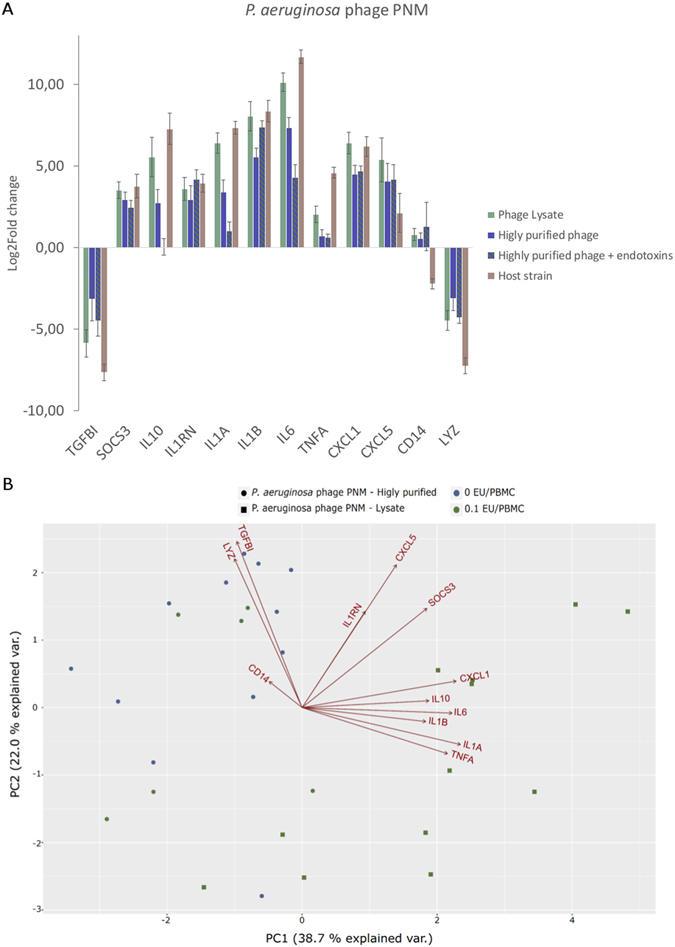Figure 3.

Effect of endotoxins in the presence P. aeruginosa phage PNM. (A) Gene expression analysis of 12 immunity-related genes by means of RT-qPCR after 20 h of stimulation of PBMCs. PBMCs were stimulated with P. aeruginosa phage PNM, either a phage lysate (105 pfu/PBMC; 0.1 EU/PBMC) or a highly purified phage preparation (105 pfu/PBMC; 10−5 EU/PBMC) in combination with 0.1 EU/PBMC. The pro-inflammatory markers IL1A, IL1B, CXCL1 and CXCL5, and the anti-inflammatory markers SOCS3, IL10, IL1RN and IL6 are upregulated The addition of 0.1 EU/PBMC to the highly purified P. aeruginosa phage preparation does not revert the observed immune response to that of the phage lysate for IL10, IL1A, IL6, TNFA and CXCL1. (B) Principal components analysis of P. aeruginosa phage PNM with or without the addition of endotoxins. The immune response induced by the highly purified phage PNM ( ) differs from the one induced by the phage PNM lysate (
) differs from the one induced by the phage PNM lysate ( ), as these two groups are visibly separated. When endotoxins are added to a final concentration of 0.1 EU/PBMC to the highly purified phage (
), as these two groups are visibly separated. When endotoxins are added to a final concentration of 0.1 EU/PBMC to the highly purified phage ( ), the immune response is similar to the highly purified phage (
), the immune response is similar to the highly purified phage ( ) and not towards the phage lysate (
) and not towards the phage lysate ( ), indicating that the observed difference is not due to the presence of LPS but due to bacterial proteins present in the phage lysate.
), indicating that the observed difference is not due to the presence of LPS but due to bacterial proteins present in the phage lysate.
